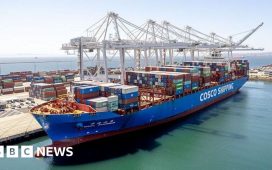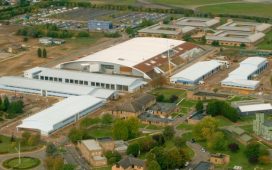Stay informed with free updates
Simply sign up to the UK energy myFT Digest — delivered directly to your inbox.
Ministers need to “move faster” to bring about the sweeping changes that Britain’s energy system needs in order for the country to shift to net zero on time, the government’s top infrastructure adviser has warned.
In a letter seen by the Financial Times, Sir John Armitt, chair of the National Infrastructure Commission, told Jeremy Hunt that Whitehall was taking “too long” to decide on measures to support private investment to help decarbonise important parts of the electricity sector.
Armitt also called for “greater urgency” on developing areas where hydrogen can be stored at scale in his letter, which was sent to the chancellor and energy secretary Claire Coutinho last week.
“Government needs to move faster to ensure that the necessary infrastructure can be delivered over the next decade,” Armitt wrote, urging Hunt to take “decisive action” in his Spring Budget on March 6.
Rishi Sunak’s government is aiming to decarbonise the electricity system by 2035 as part of its wider, legally binding goal to cut carbon dioxide emissions across the economy to net zero by 2050.
The opposition Labour party, which has a roughly 19-point lead over the Conservatives ahead of the general election expected this year, wants to decarbonise the electricity system five years earlier, by 2030.
Just over 56 per cent of the UK’s electricity in 2022 came from low-carbon sources such as wind, solar, biomass and nuclear, according to official figures. Most of the rest — or some 38.4 per cent — was supplied by power stations fuelled by natural gas.
New wind and solar farms are backed by government guarantees on their electricity price, but Armitt accused ministers of taking too long to set up similar mechanisms to support the decarbonisation of gas-fired power stations and to develop other sources of flexible generation.
While the role of gas-fired power plants is expected to fall as the electricity system starts to rely more heavily on wind turbines, some will probably need to be retained in order to ensure energy provision on windless days.
But in order to become low carbon, gas-fired power stations will need to be converted to run on hydrogen instead of natural gas, or be fitted with equipment to capture their carbon dioxide emissions.
The NIC wants the government to support “multiple” large-scale plants of that kind and other technologies to help balance the system, as well as developing pipes and storage caverns to transport and store hydrogen and CO₂ emissions.
“To meet the needs of the power sector, we should be deploying hydrogen and gas CCS [carbon capture and storage] generation at a pace equivalent to the ‘dash for gas’,” Armitt said in his letter, in a reference to the rapid buildout of gas-fired power stations in the 1990s.
But he highlighted two instances of the government taking two years or more to consult or decide on policies to support such infrastructure, noting that further work would be required before the support was actually delivered.
Armitt’s intervention follows a warning by the NIC in its latest five-yearly assessment of UK infrastructure that “significant deficiencies” were holding the country back. It also comes at a sensitive time for Sunak, prime minister, with rising competition for investment in clean energy from the US and the EU, among others.
The Department for Energy Security and Net Zero said: “We have a clear strategy to boost UK industry and reach net zero by 2050 — backed by £200bn in low-carbon investment since 2010, with a further £100bn expected by 2030.”
It added that the government was “working closely with the private sector on strategic investment” and had “recently announced 11 major hydrogen projects across the UK”.










